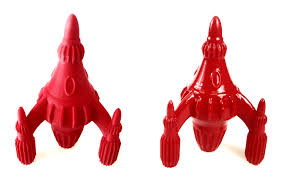Finishing prints seems to be an inherently difficult skill to master. So i was looking at tips and tricks online at the best ways of creating a print that had a really great finish and came across the use of Acetone. I understand the dangers of using Acetone and found a safer method not using heat on youtube via this link which looked good. I was just wondering if anyone had used Acetone to finish their prints and what success they had had as i know its not as easy as it looks?

5 Likes
No, but I’m curious to find some expertise on this as well
Hello, I started experimenting with aceton some time ago before joining 3D hubs. Here is what I found: Heating aceton sortens the time needed for the treatment but the thing is that aceton produces vapor even at room temperature. The trick is to keep the vapor from escaping the container. Basically you can use a glass jar with a metal lid or one made from non aceton soluble plastic. As there is no heat involved there will be no major pressure build up and the process is safe as long as the room is well ventilated. You can see one treated print at my hub. Its a part of a series of 15 parts so the process is well tested for repeatability. I can send you pictures of aceton treatment jars and more details when I get home from work. The concept is more or less the same as in the video you sent. Br Mikko
Thx! Could you add a link to your Hub?
Cheers,
Filemon
I just received some THF in order to smooth PLA… I will tell you as soon as I did some tests.
Hello again,
Here is the link to my hub:
http://www.3dhubs.com/jyväskylä/hubs/mh-prints-design
Sorry for the lack of pictures, most of the prints I have made are confidential in nature (mostly product development). I’ll post some more in the future.
So here is the break down as promised:
What is needed:
-1 glass jar
-1 drinking glass or candle glass etc. that fits the jar
- 1/2 decilitre of aceton (more if your jar is big)
- steel plate with a handle, you can use aluminum wire for the handle the plate can be aluminum too as long as it is straight (to prevent the part warping during lifting)
So this is how I do it:
1. Put the glass into the jar.
2. Pour some aceton into the jar (half a decilitre will do).
3. Put the printed ABS part to the round steel plate and lower it into the jar on top of the glass.
4. Close the lid and wait for 30-45 minutes to smooth all post processing marks from the print, 1 hour and 30 minutes to smooth layers. Some experimentation might be needed to optimize the time for different volume jars.
5. Take the part out and be careful not to touch it as it is very soft. The part will smoothen some more during a period of 1 - 2 hours so be patient. If the part is not smoothened enough repeat the process. The part will harden to its original strenght in 8-24 hours.
Hope this helps and ask away if you want more info!
Br
Mikko
2 Likes
Thanks for sharing will definitely investigate!
No problem, have fun experimenting!
Hi @all,
@sandrako asked me to share some of my esperience with acetonevapour-smoothing, so here I go:
I started experimenting with that method when I tried my first ABS print some months ago. And had some success with just pouring acetone in a jar, putting it on my heated bed at ~60°C and inserting the part after the vapour reached a certain level. I used some wiremesh formed into a platform to keep the parts away from the liquid. As the jar was fairly deep I had problems removing the parts after the treatment was finished.
My current method is similar but now I suspend the part from the lid. I have found that the parts are quite sticky if they are fresh out of the bath, so the wire gives you a “good” grip to handle them without destroying the finish. I melt a thin wire into the part and try to hit the center of gravity so that it is suspendet the way I want it. Then the wire is bent into a hook-shape and attached to a wireloop on the lid. The rest of the process is the same (pour acetone, heat, insert part, wait, pull out part).
Greetings,
Marius
1 Like
I added a picture of a vapour-treated model to my hub: http://www.3dhubs.com/munich/hubs/marius . I used the “cold method” without extra heating of the container. The model was in the box over night.